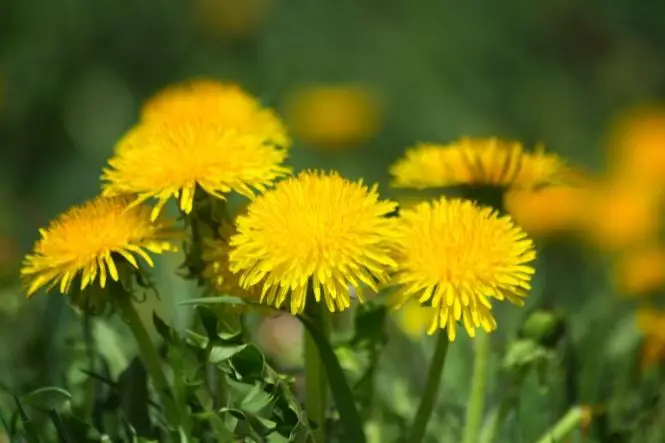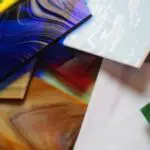Rubber is a natural product made from latex. Many plants, including dandelions, produce latex but most of the world’s latex, the key ingredient of rubber, comes from the rubber tree, Hevea brasiliensis.
Rubber is a very versatile product, and has many uses, including tyres, balloons, balls, shoes, erasers, playground surfaces, rain wear, gloves, adhesives, and of course, rubber bands.
Table of Contents
Make an Elastic Band
The latex from a dandelion can make a small rubber band – but please do not do this experiment if you think you might be allergic to rubber or latex.
Collect some dandelion leaves and flower stems, break them and squeeze out the milky sap. Coat a finger down to the first knuckle with the sap, let it dry, and then gently roll this off – it will form a small, stretchy (but not very strong) elastic band. Dandelion latex will also make a rubbery sheet, if spread on a piece of glass or a tile. However, it will be stickier than the elastic band, as body heat helped the latex in the elastic band to set.
Make Waterproof Cloth
Waterproof clothes can be made out of rubber sandwiched between two layers of fabric – this process was invented by Charles Macintosh, which is why waterproof coats are sometimes called ‘macintoshes’ or ‘macs’. To make a small piece of waterproof fabric, spread dandelion sap on a piece of cloth and allow it to dry – this will now not let water through, though it will stay rather sticky.
Make a Bouncing Ball
Acid helps latex stick together (coagulate) – mix half a teaspoon of sap and quarter of a glass of water and stir with a straw. Slowly add a bit of vinegar – the acid will make the latex stick to the straw. Squeeze the latex into a ball – this will get rid of the excess water – and try giving it a bounce! A rubber ball bounces because it is elastic and squashes as it hits the ground – the energy used in movement goes into changing the ball’s shape. As it returns to its original shape, it releases the energy, which turns into movement again.
Curing Rubber
Rubber made commercially is cured using heat and sulphur, which stops the rubber from being sticky and means that it isn’t affected by heat (the dandelion ‘rubber’ will be soft in warm conditions and stiff in cold conditions). Leaving the rubber ball made from the dandelion latex for about a month will begin the curing process and will change it from white to a transparent brownish colour. This allows any water to evaporate and continues the coagulation that the vinegar started.
Using Dandelions
These aren’t just fun experiments to do – in 2008, Ohio State University’s Ohio Agricultural Research and Development Center and the Ohio BioProducts Innovation Center received a grant of around $3 million to study methods to make rubber from the roots of a Russian dandelion, Taraxacum kok-saghyz.
It isn’t the only use for a dandelion – the young leaves are high in calcium, potassium, and iron, and can be eaten like spinach, the young roots (after peeling) taste like turnip, and the flowers are edible too. However, remember that dandelions can be diuretic (make you wee)!
Dandelion sap experiments are taken vidyaonline.net/arvindgupta/rubberscience.




